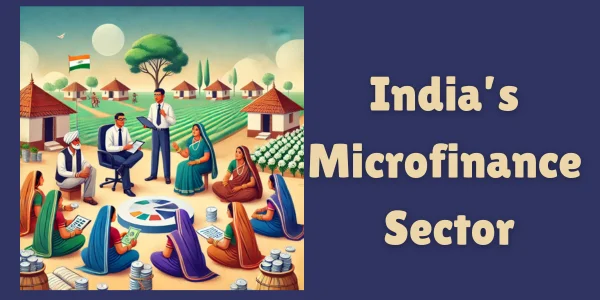Over the past twelve years, India’s microfinance sector has experienced a remarkable expansion, with its loan portfolio surging by over 2,176%. In March 2012, the industry’s total loan portfolio stood at ₹17,264 crore, which has escalated to an impressive ₹3.93 lakh crore by November 2024.
Expanding Reach and Economic Contribution
Microfinance Institutions (MFIs) have significantly broadened their reach, now operating across 723 districts, including 111 aspirational districts, spanning 28 states and 8 Union Territories. These institutions cater to the financial needs of nearly 8 crore borrowers, contributing 2.03% to India’s Gross Value Added (GVA) and supporting approximately 1.3 crore jobs.
Challenges Faced by the Sector
Despite this impressive growth, the microfinance sector encounters several challenges:

- Fundraising Difficulties: MFIs report challenges in securing low-cost, long-term funding, which is essential for sustainable operations and expansion.
- Portfolio Quality Concerns: There has been a decline in lending to the sector, adversely affecting the quality of loan portfolios.
To address these issues, MFIs have proposed several initiatives, including:
- Credit Guarantee Schemes: Tailored schemes for MFIs and borrowers to mitigate credit risks.
- Special Funds for the North-East: Establishment of dedicated funds to support operations in the North-Eastern regions.
- Relaxed Qualifying Asset Norms: Adjustments to diversify lending risks and enhance financial inclusion.
Government’s Response and Recommendations
In a recent meeting chaired by M Nagaraju, Secretary of the Department of Financial Services (DFS), Ministry of Finance, these challenges were discussed with representatives from key industry bodies, including Microfinance Institutions Network (MFIN) and Sa-Dhan. The DFS Secretary urged MFIs to develop a comprehensive roadmap to strengthen the sector and ensure its long-term viability. Emphasis was placed on creating a vibrant and financially sound MFI ecosystem capable of effectively addressing the needs of rural communities.
Advocating for Digital Transformation and Governance
The DFS Secretary also encouraged MFIs to adopt digital repayment methods, prioritizing cybersecurity and resilient IT infrastructure. Improved governance standards were highlighted as crucial for enhancing the sector’s credibility and ensuring sustainable growth.
The Road Ahead
The exponential growth of India’s microfinance sector underscores its pivotal role in advancing financial inclusion and uplifting rural livelihoods. However, addressing the challenges of fundraising, portfolio quality, and governance is essential to sustain this growth trajectory. Collaborative efforts between the government, regulatory bodies, and MFIs are imperative to build a robust microfinance ecosystem that continues to empower low-income households across the nation.
As the sector evolves, embracing digital technologies and enhancing governance frameworks will be key drivers in achieving financial inclusion goals and contributing to India’s broader economic development.

